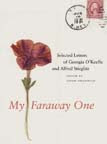 When I was in Jerusalem, I met a lovely French woman who pointed me in the direction of a good place to find all sorts of exotic treasures ~ a store filled with Persian carpets, Roman glass, antique jewelry, miniature paintings, and all sorts of other little curiosities. Too many fabulous things ~ like Aladdin’s cave! Peering into the cases filled with Bahraini pearls, Indian rubies, and hand cut diamonds, I spied a simple gold ring with a carnelian stone. I asked to see it ~ an antique Persian seal in a modern setting (see below). Before I knew it, I was bargaining with the owner, and had agreed to a price (almost half of what he had asked for)!
When I was in Jerusalem, I met a lovely French woman who pointed me in the direction of a good place to find all sorts of exotic treasures ~ a store filled with Persian carpets, Roman glass, antique jewelry, miniature paintings, and all sorts of other little curiosities. Too many fabulous things ~ like Aladdin’s cave! Peering into the cases filled with Bahraini pearls, Indian rubies, and hand cut diamonds, I spied a simple gold ring with a carnelian stone. I asked to see it ~ an antique Persian seal in a modern setting (see below). Before I knew it, I was bargaining with the owner, and had agreed to a price (almost half of what he had asked for)!The owner told me that the seal in my ring was about 400 years old. So, I decided to do a little research. Carnelian was used by the ancient Egyptians to adorn the dead as they believed that the stone would guide and protect their loved ones in the after-life. Since then it has been used for seals, as carnelian has the unique quality that wax does not adhere to it. It was (and still is) particularly popular in the Muslim world because it is said that the prophet Mohammed wore a carnelian and silver ring on the little finger of his right hand. It is also said that the desires of anyone who wears a carnelian will be gratified. In Iran, wealthy Persians traditionally carried carnelian seals, engraved with either the owner’s name, the name of a Muslim saint, or a phrase from the Koran. I showed my ring to a Persian friend who said that although the script is in the old style and backwards (as it is a seal), she could make out the name of a man. So, I will wear my carnelian and hope for desires to be gratified!
 Oh, and check out this gorgeous piece at DeVera (drool!).
Oh, and check out this gorgeous piece at DeVera (drool!).(top image: Rings and necklace, carnelian, turquoise, moss agate, amethyst, milky quartz, and steatite on linen cord, from the tomb of Wah, western Thebes, Egyptian, Middle Kingdom, Dynasty 12, reign of Amenemhat I, c. 1975 BC, The Metropolitan Museum of Art, Rogers Fund and Edward S. Harkness Gift, 1920)

















3 comments:
What beautiful jewelry--can't wait to see your ring!
The ring is as beautiful as its owner!
şık mücevherler
Post a Comment